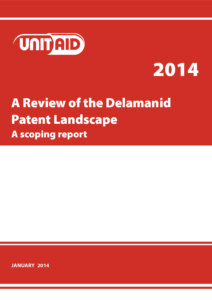Abstract
The World Health Organization (WHO) estimates that a third of the world’s population is latently infected with Mycobacterium tuberculosis. In 2012, there were an estimated 8.6 million incident cases of tuberculosis (TB), with 12 million prevalent cases, 940 000 deaths among HIV-negative people, and 320 000 deaths among HIV-positive people.1 Most cases (58%) were in the WHO South-East Asia and Western Pacific regions, while the WHO African Region had 27% of the world’s cases. Despite being curable, TB claimed the lives of 1.3 million people in 2012.
TB treatment has become more complex, particularly with the emergence of multidrug-resistant (MDR) strains of Mycobacterium tuberculosis. There were approximately 450 000 new cases of multidrug-resistant tuberculosis (MDR-TB) worldwide in 2012.1 MDR-TB is resistant to the two most commonly used TB drugs, isoniazid and rifampicin. It requires extended treatment with second-line drugs that are less effective and have more adverse effects than isoniazid- and rifampicin-based regimens.2
Given the emergence of MDR-TB and the need to shorten treatment duration, new drugs are required. The last of the current anti-TB treatments—rifampicin—was introduced in 1963. Since then, research for new TB treatments had largely come to a halt. However, in recent years the pipeline for potential new TB treatments has started to look more promising than it has for the past 50 years.
One compound of interest is Otsuka Pharmaceutical’s delamanid (OPC 67683). Delamanid has been identified as a possible new treatment for MDR-TB.3 In November 2013, the Committee for Medicinal Products for Human Use (CHMP) of the European Medicines Agency granted a conditional marketing authorization for delamanid, which is marketed under the brand name Deltyba, for the treatment of MDR-TB.
In view of delamanid’s potential role in the treatment of MDR-TB, this report explores the patent landscape and considers possible access issues relating to this drug.



